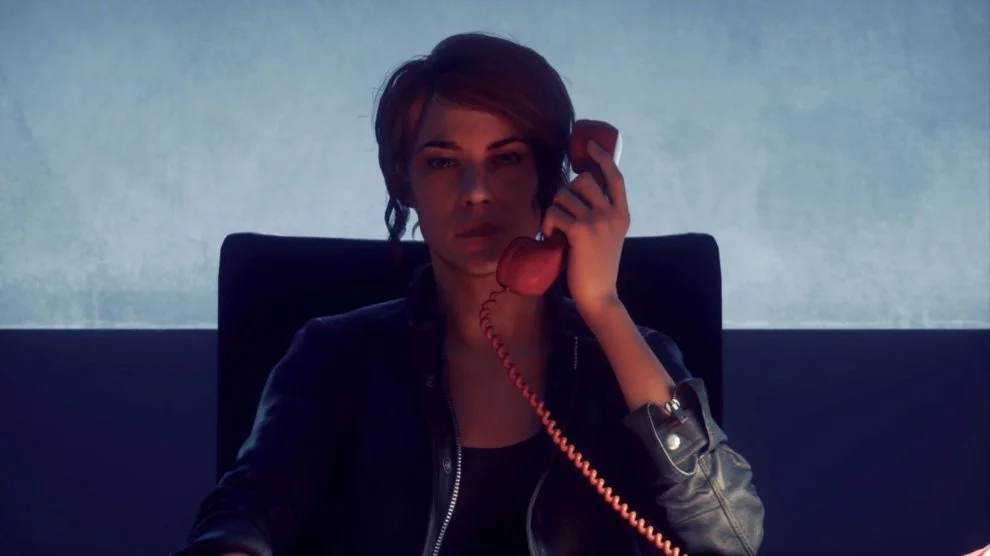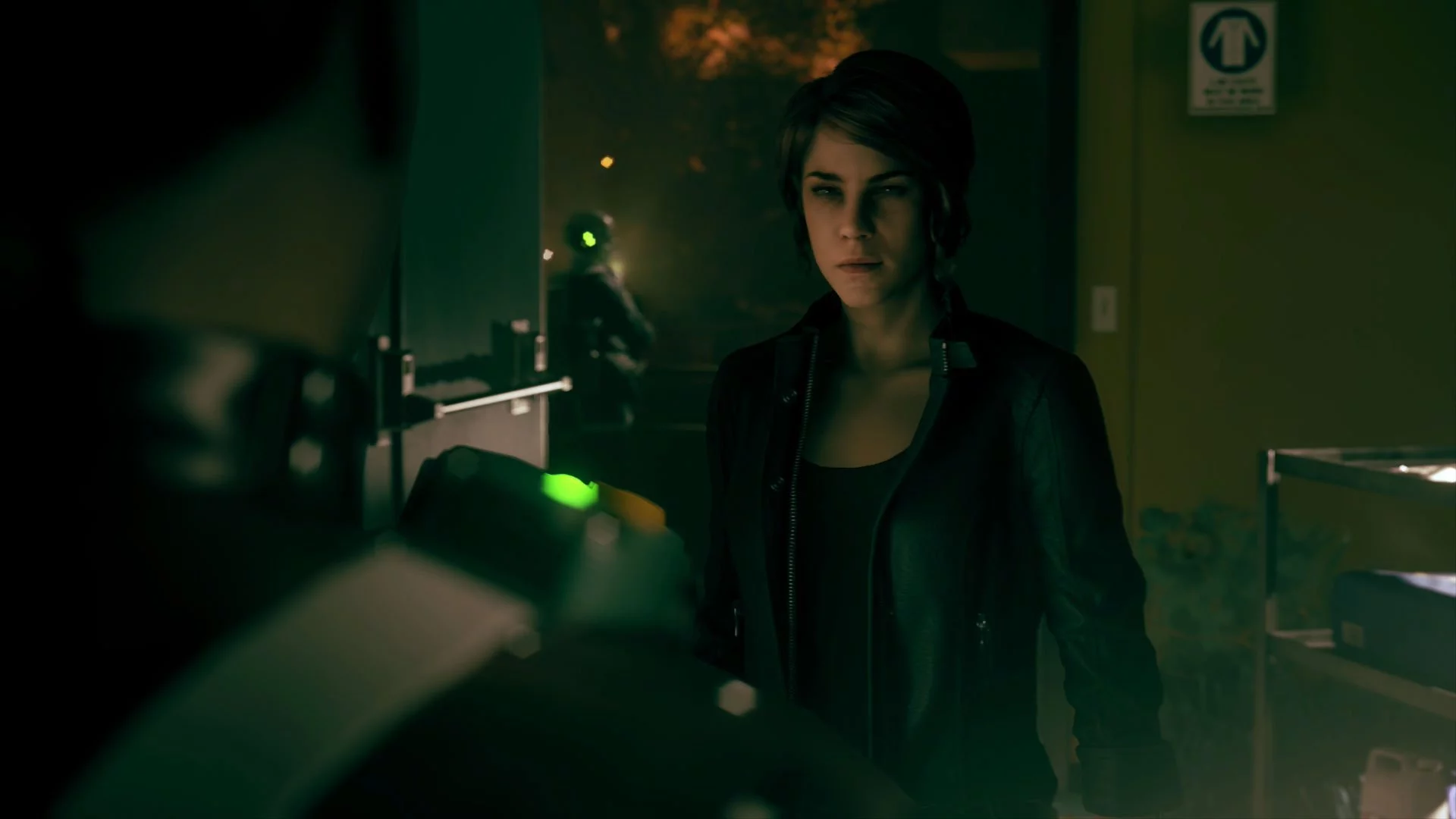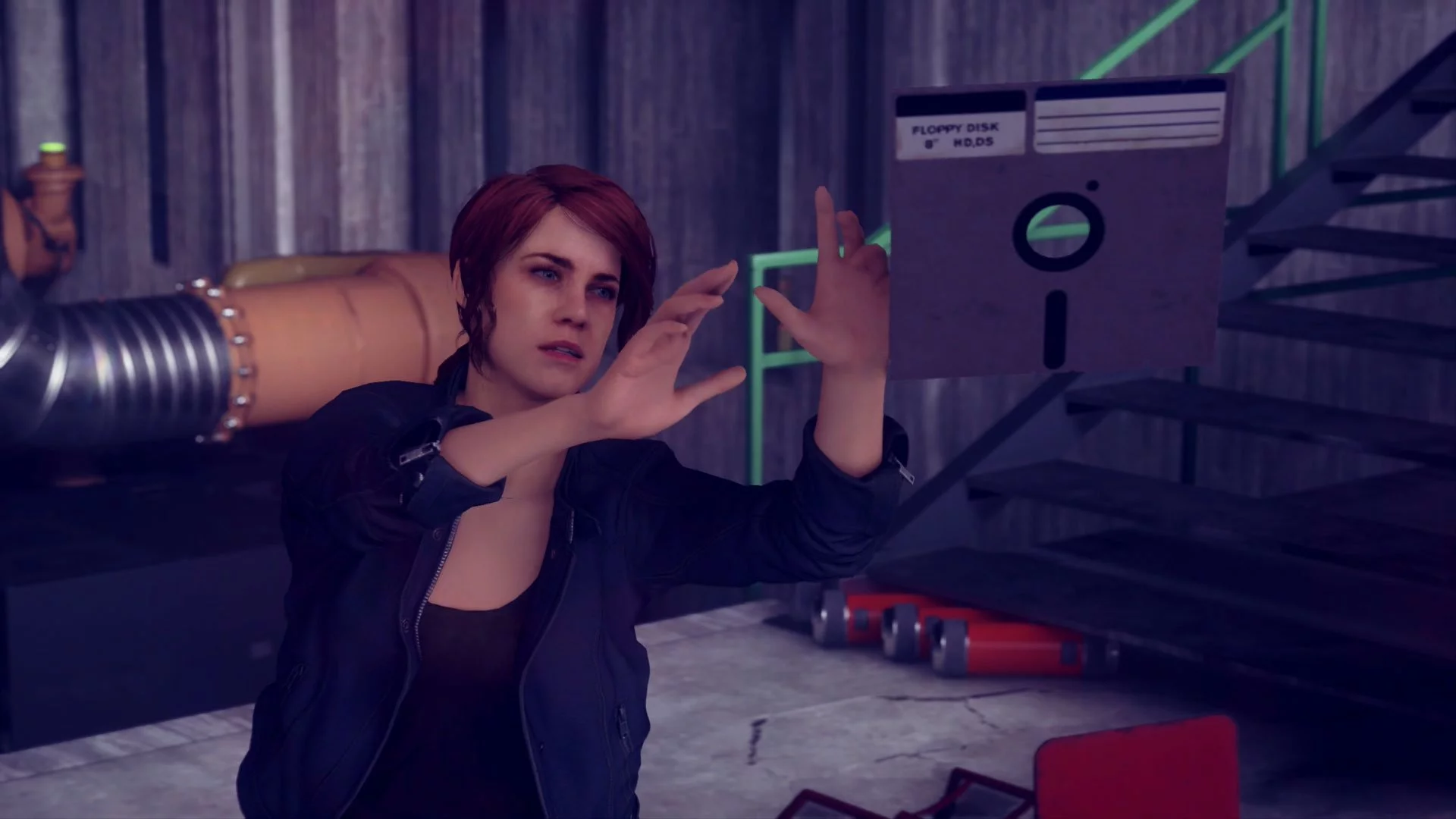Alan Wake remains one of my favourite games to this day, a bizarre tale of the supernatural developed by Remedy Entertainment that opened my eyes to David Lynch’s surreal Twin Peaks. While I enjoyed the studio’s current-gen follow up, Quantum Break, it wasn’t quite the same, suffering from a (forced?) identity crisis during the Xbox One’s early “TV, TV, TV” days. Control is an apt name for Remedy’s latest; it looks to have exercised full creative influence during production, resulting in a deliciously complex, enjoyable and utterly strange piece of work.
Control begins as protagonist Jesse Faden enters The Oldest House, the hidden-in-plain-sight headquarters of the Federal Bureau of Control. Drawn to the building by a seemingly unknown force, Jesse is on the search for her sibling and is as clueless as the player as to what the Bureau is or does. Jesse soon clues into the notion the supernatural is certainly at play; The Oldest House remains unseen to all despite being situated on a busy Manhattan street. A notice as you enter advises that smartphones, smart watches or anything else “smart” won’t function properly inside… and might even cause you bodily harm if you hold onto it.
As Jesse delves further into the Bureau, she notices that the building can change. An elevator appears where it wasn’t before. An old janitor looks through her, muttering to himself while assuming Jesse’s there to apply for a job as a janitor’s assistant. The cleaner doesn’t seem to notice — or at the very least, just doesn’t care — that the Bureau’s offices seem abandoned, emergency lighting flickering and with an otherworldly chant resonating from deep within its bowels. To him, it’s just another day at the office.
If you thought Alan Wake leaned into the supernatural, Control more than doubles down upon that. As Jesse quickly learns, the Bureau’s main responsibility is to detect and contain Objects of Power and Altered Items that can cause Altered World Events. Upon picking up the former director’s shape-shifting Service Weapon, itself an Object of Power, Jesse binds herself to it and becomes the Bureau’s new head. Altered Items like the dastardly fridge first detailed at E3 2018 seemingly lurk around every corner, with collectible documents (far more than the 120 needed for an Achievement or Trophy, I might add, and the reason why I gave up on making a guide for them at about collectible 200…) detailing the power they have to impact the world.
The Oldest House has been designed as a Metroidvania labyrinth, far less linear than Remedy games before them and full to the brim with lore you can choose to uncover through exploration. Despite her title as Bureau Director, Jesse starts the game lacking clearance cards required to enter rooms or even entire sections of the building. If a keycard isn’t blocking her way, perhaps a large gorge requiring the ability of flight to bypass the obstacle is. As the player, where and how you explore is up to you — you can try to make a beeline for a keycard or an ability or simply play from mission to mission. An in-game map is essential to get your bearings and also to attempt to figure out where to go next; when the map randomly decides it won’t load at your request, it’s all the more noticeable. Apart from a single line of text telling you what’s next in the mission you’re inside, you’re largely left to your own devices. There are also randomly-generated Bureau Alert and Countermeasure missions to complete, though their repetitive nature meant I quit interacting with them after I’d earned the Achievements tied to the systems.
All this exposition and I still haven’t mentioned the Hiss, a supernatural force that’s flooded the Bureau. It has the ability to creep into the minds of those in The Oldest House, turning them into cannon fodder puppets (in the case of the Hiss Ranger) or something far more grotesque (I’ll leave those enemies for you to discover yourself). Like in Alan Wake, most enemies have a shield that first needs to be dropped (best by Jesse’s abilities; one called Launch lets her pick items up and launch them using telekinesis) before she can use the Service Weapon to take away their health.
Like Jesse and her evolving abilities, the Service Weapon can be upgraded as well, opening up new firing modes. You start with Grip, which functions as a normal revolver (and feels very much like the revolver did in Alan Wake) but can gain access to Shatter, a shotgun-like mode and more. My personal favourite is a charged shot called Pierce, which is devastating to enemies but needs time before you can actually fire it off. The trustworthy Launch-Gun combo will largely work in normal missions, but that’s decidedly not the case for most of Control’s optional side missions. In those, you’ll need to lift your game, combining skills in creative ways to best your opponent; if you’re not using levitate to gain the high ground, pulling debris from a nearby wall to use as a shield before then throwing it at the boss, you’re certainly doing it wrong. As with exploration, Control certainly doesn’t hold your hand when it comes to combat; battles are constantly challenging but never feel cheap.
I’ve spent around 20 hours scouring through The Oldest House, taking my job as director very seriously (though I’m currently annoyed because a single mini-boss won’t spawn meaning I have one side mission that I cannot complete). That small blip aside, I’ve enjoyed myself immensely while playing; I don’t remember the last time I’ve excitedly phoned or texted friends about theories I’ve concocted after reading through collectibles, or when I’ve encountered a puzzle and needed to talk through it in an effort to solve it. Control excites me for what it is and for what I hope it comes to be in two pieces of planned DLC or even a sequel. Though I’m all but done with missions — and even though I’ve spent hours uncovering a number of Easter eggs and solving a number of challenging puzzles — I think I’ve barely scratched the surface of what Control is hiding.
Control shows not only Remedy’s growth as a studio, but studio head Sam Lake’s as a writer, building and greatly expanding upon concepts started in Alan Wake and flirted with in Quantum Break. To borrow from my favourite fictional writer: it’s not a lake, it’s an ocean; Control makes that ambitiously supernatural game feel like merely a drop in the pond. It incorporates live action elements into its narrative in a way that makes Quantum Break feel even more like an ad for a nonexistent Microsoft television arm. Play Control for its lore, its sense of exploration or its combat, but the bottom line is this: you simply need to play it. It is absolutely my favourite Remedy game to date.
 |
|
The good
|
The bad
|
Control was reviewed using a promotional code on Xbox One S and Xbox One X, as provided by the publisher. Click here to learn more about Stevivor’s scoring scale.
This article may contain affiliate links, meaning we could earn a small commission if you click-through and make a purchase. Stevivor is an independent outlet and our journalism is in no way influenced by any advertiser or commercial initiative.


























